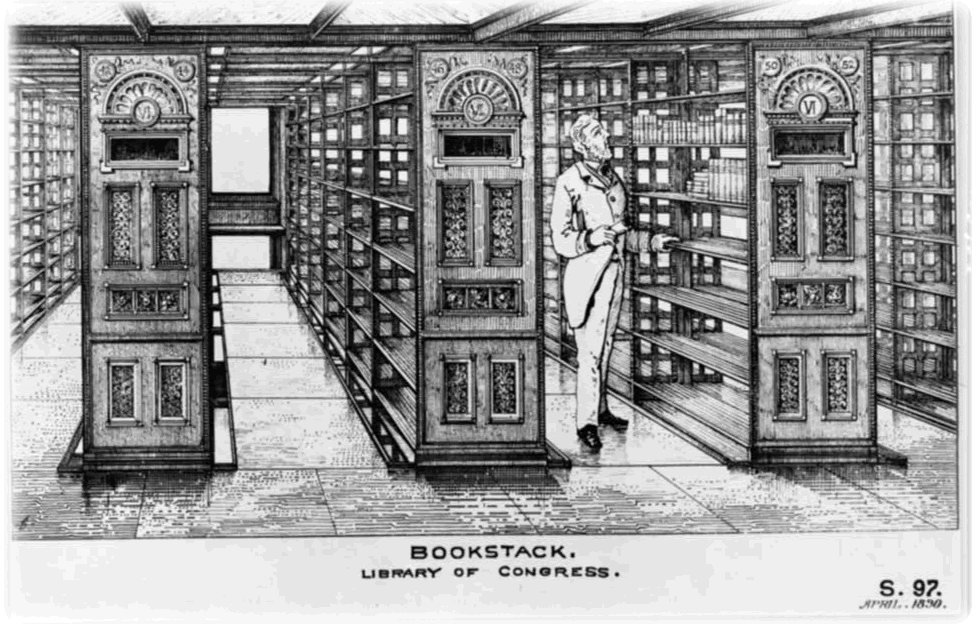Public Service
Book Service SectionThe largest and most visible area of the division is the Book Service Section. This section best illustrates what comes to mind when one thinks of a library. In the stacks, which are closed to the public, the Section is responsible for retrieving, shelving, shelfreading, and performing minor shifts in the General Collections. Some of the Section's major responsibities include providing service to the public in the three general reading rooms and four of the special reading rooms. The Section also provides book retrieval service to users of seven reading rooms in the Jefferson and Adams Buildings and to staff members throughout the Library. Approximately 2,000 requests for collections items are received every working day. Most requested books are retrieved and delivered in thirty to ninety minutes, and the not-on-shelf rate now averages less than twenty per cent. Members of the public generally request books by filling out paper call slips, providing author, title and call number information. Library staff members, however, typically use the Call Slip feature of the Library's new automated, integrated library system (LC ILS). Plans call for this automated Call Slip feature to be made available to public users in the near future. Collections Control CenterThe Collections Control Center is responsible for the online monitoring of the Automated Book Conveyor System and for assisting Library of Congress staff who use the LC ILS Call Slip feature to request items from the collections. Items requested in this manner are transported to the staff via the Automated Book Conveyor System, more popularly known as the blue box system. On a typical weekday, approximately one thousand requests are accommodated by these systems. The Center's staff also handles telephone calls from staff members in search of errant requests. The second major responsibility of this Section is the operation of the Library's Reader Registration Station, which opened in February 1996. First-time Library users enter information about themselves at computer terminals in the station. Then, an attendant checks the valid identification presented by the reader against the data entered in the computer. If there are no discrepancies or problems, a digital image of the user is taken, and a photographic Reader Identification Card is produced and given to the user. These cards are required of all public users in all Library of Congress reading rooms. Loan Charging UnitThe Loan Charging Unit is responsible for checking out books and other Library materials to Congress, to government, academic, public, and research libraries, to Library of Congress staff, and to special categories of local borrowers such as former Members of Congress, Supreme Court Justices and foreign embassies. The charging of the materials is done at four Library locations located in the Jefferson Building, Adams Building and the Madison Building. Patron accounts and item records are created in Voyager's Integrated Library System. After the item record is created, it is then linked to a bar code and charged. Along with these check out and establishing procedures, the Loan Charging staff is also responsible for checking in returned material and maintaining mandatory public service hours in each charge station. Loan Accounts UnitThe Accounts Unit is composed of two Account Representatives and one Circulation Technician (this position will soon be redefined) whose primary responsibility is to monitor the accuracy of accounts. Both positions require frequent contact with Congressional, government, interlibrary loan, Library staff and special borrowers, either in person, by mail, by email or on the telephone. Accounts are assigned to both Account Representatives who work toward resolving discrepancies between CALM Division records and those of our clients. |
|
| The
Library of Congress >> Especially
for Researchers >> Research
Centers August 8, 2005 |
Contact
Us: Ask a Librarian |
